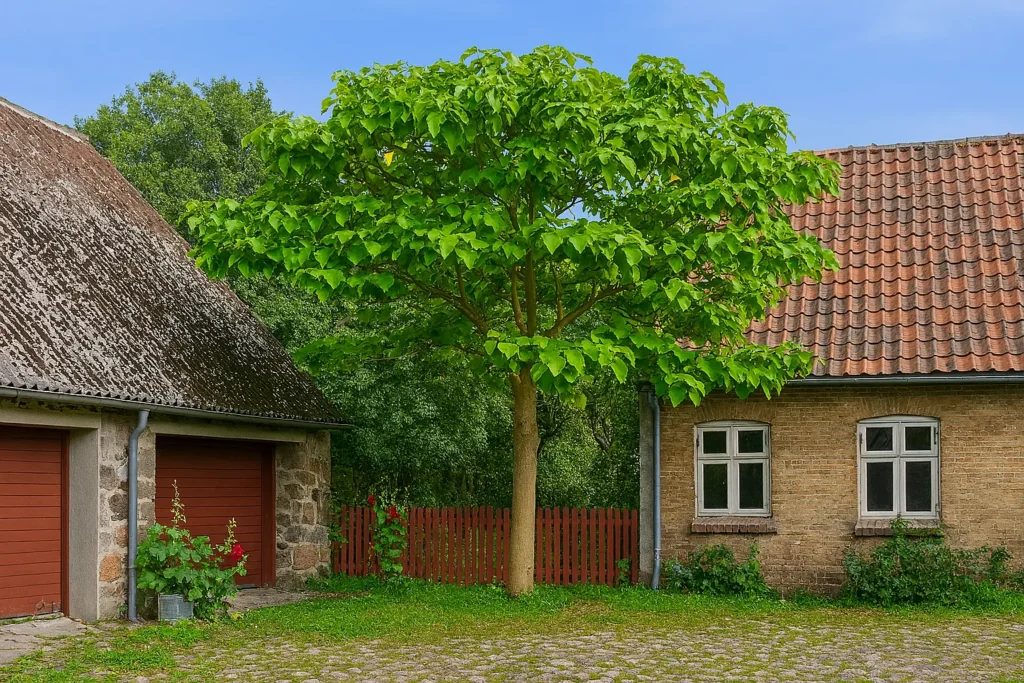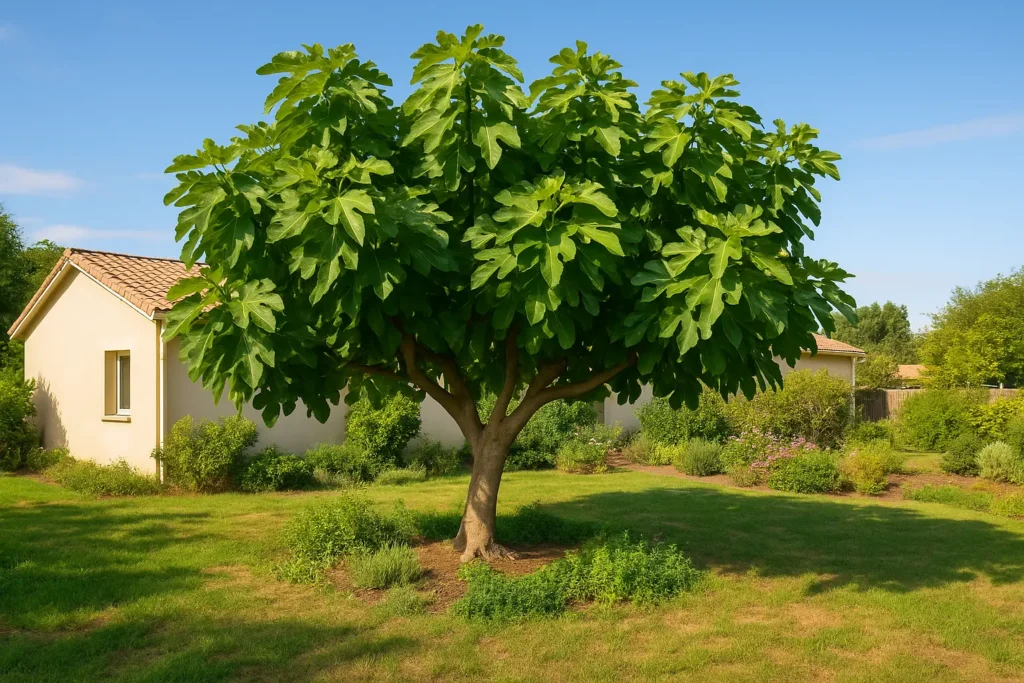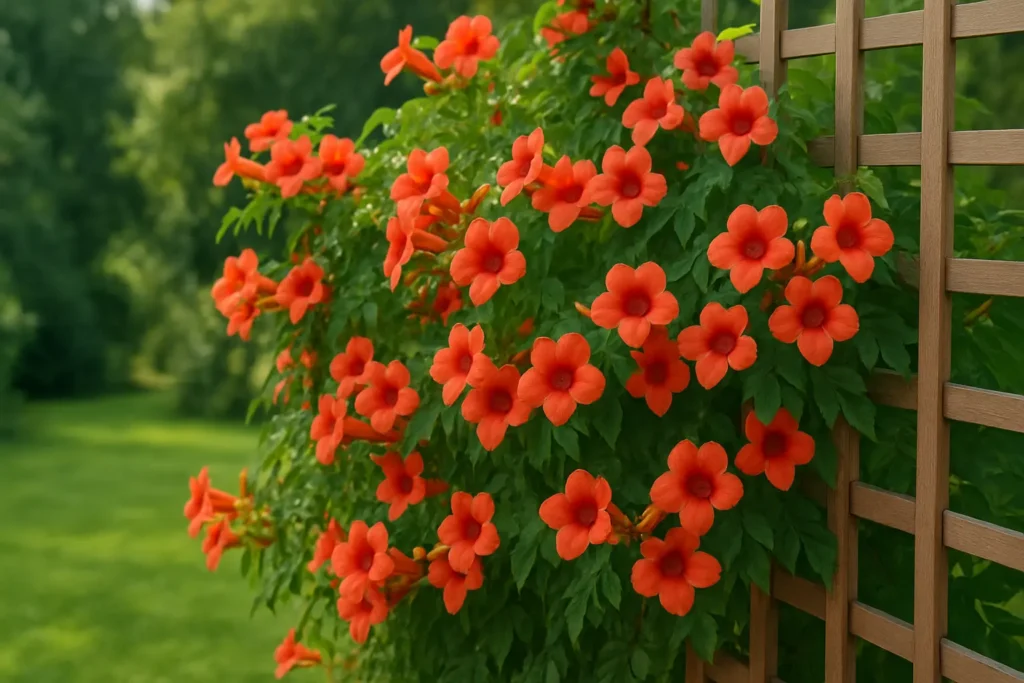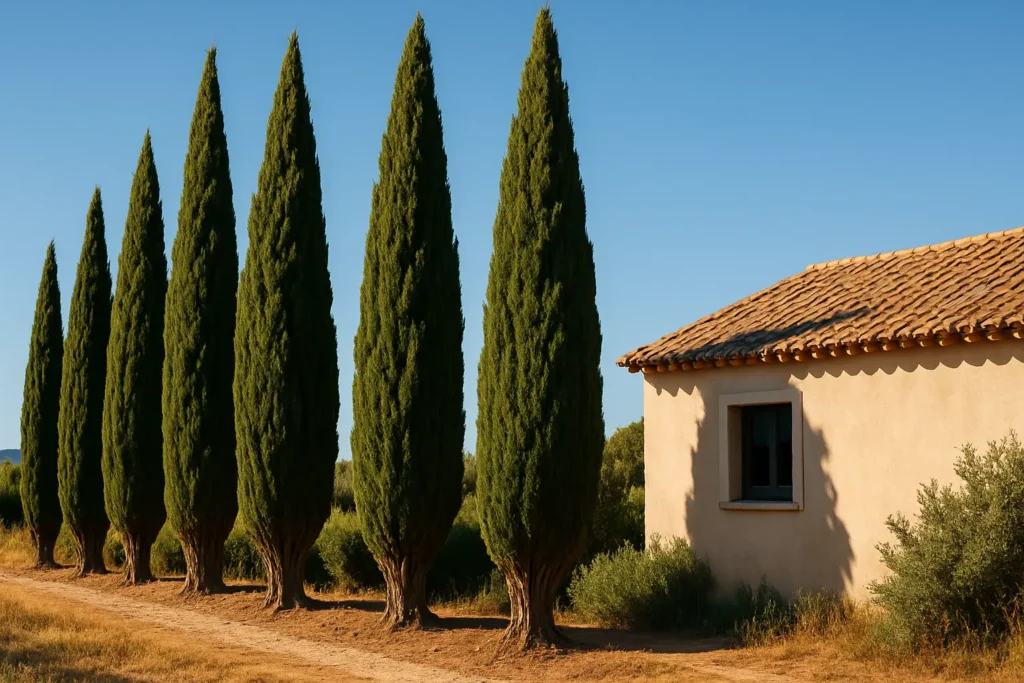THE Paulownia tomentosa is a tree native to Asia that is attracting more and more owners with its impressive silhouette and large purple flowers. Nicknamed the imperial tree Or the kir treei, he made a place for himself in our gardens thanks to its spectacular growth and undeniable ornamental qualities. Its ability to absorb significant quantities of CO2 also gives it an image as an ecological tree. However, behind these attractive assets lie far less enchanting realities. Before succumbing to the temptation to plant this tree in your outdoor space, discover the seven major drawbacks of the Paulownia tomentosa which could make you reconsider your choice for a more harmonious and balanced garden.
Our article in brief:
THE Paulownia tomentosa, despite its beauty and rapid growth, presents several major drawbacks for your garden.
- This tree threatens biodiversity with up to 20 million seeds per year dispersed over several kilometers
- The roots of the Paulownia tomentosa extend up to 40 meters and damage foundations, pipes and paving
- THE Paulownia tomentosa has impressive growth due to its excessive water consumption (100-300 liters/day). This depletes the soil and compromises neighboring plantations
- The maintenance of this tree is expensive and restrictiveIt requires 3-4 annual prunings and treatments against various diseases.
In this article
Paulownia tomentosa may threaten local biodiversity
THE Paulownia tomentosa presents a particularly worrying invasive potential compared to other ornamental species. Each tree can produce up to 20 million seeds annually, dispersed by the wind over several kilometers. This incredible ability to spread quickly transforms a simple tree into a real threat to the natural balance of our gardens and wild spaces.
In several regions, such as the United States, Central Europe, and Australia, this species is now classified as invasive. Its growth forms dense stands that literally smother native vegetation, disrupting ecosystems established decades ago. Monopolization of available natural resources (light, water, nutrients) by Paulownia drastically reduces local plant diversity.
This fragmentation of natural habitats affects the entire food chain: insects, birds, and small mammals are deprived of their usual resources. Faced with these proven ecological risks, some countries have already restricted or completely banned its planting, prioritizing the preservation of their natural heritage.
Aggressive and destructive roots
THE roots of Paulownia tomentosa are arguably one of its most problematic drawbacks. This particularly aggressive root system extends over an impressive radius of 30 to 40 meters around the trunk. Its taproot can dive up to 8-9 meters deep, while the lateral roots develop mainly in the first few meters of the soil.
This underground architecture regularly causes costly damage to surrounding infrastructure. Building foundations, pipes, sidewalks, and exterior siding are subjected to considerable pressure, which can lead to cracks and deformation. The shallow roots also make it impossible to cultivate crops or simply mow beneath the tree.

| Root damage of Paulownia tomentosa | Consequence | Potential cost of repairs |
|---|---|---|
| Raising the paving stones | Uneven surface, risk of falling | 500-1500€ |
| Foundation cracking | Structural weakening of the building | 2000-10000€ |
| Pipeline rupture | Leaks, infiltrations, water damage | 1000-3000€ |
To limit these risks, a minimum distance of 5 to 10 meters from any construction must be respected. The installation of anti-root barriers at least 2 meters deep often becomes necessary, representing a significant additional investment to protect your property from the underground attacks of this imperial tree.
Excessive consumption of water and nutrients
The impressive speed of growth of Paulownia is explained in particular by its particularly voracious water consumptionDuring periods of active growth, a single tree can absorb between 100 and 300 liters of water daily, much more than species such as oak, maple or linden.
This insatiable thirst poses serious problems, particularly in regions prone to drought or water stress. Paulownia draws so intensively on the soil's reserves that it literally dries out its immediate environment, compromising the survival of surrounding plantations.
Excessive nutritional needs
Beyond water, this tree quickly depletes soils of essential nutrients. Its nitrogen, phosphorus and potassium requirements far exceed those of other common ornamental species in our gardens.To maintain its vitality, regular fertilizer inputs become essential, generating additional costs and a significant environmental impact.
In a context of climate change where rational water management is becoming a priority, planting a Paulownia may seem contradictory with a sustainable garden approach that respects available natural resources.
Paulownia tomentosa and its rapid growth require constant maintenance
The extraordinary growth of Paulownia tomentosa paradoxically constitutes one of its main defects. This tree can grow 2 to 4 meters annually, reaching up to 25 meters in just five years. This rapid growth, often presented as an advantage, actually generates a considerable maintenance burden for the gardener.

Controlling this exponential growth requires frequent and regular pruning, generally 3 to 4 times per year. These operations quickly become time-consuming and physically demanding as the tree grows taller. Professional intervention is often essential, representing an average annual cost of €500 to €800.
Paulownia branches, despite their impressive growth, exhibit a worrying structural fragility. During windy periods or under the weight of winter snow, these branches break easily, potentially creating dangerous situations for people and property nearby.
A tree susceptible to diseases and parasites
Contrary to its robust image, Paulownia tomentosa displays a surprising vulnerability to phytosanitary problems. Several pathogens and parasites regularly affect it, compromising its aesthetic appearance and sometimes even its survival.
Among the most common diseases are crown rot caused by Phytophthora cactorum, powdery mildew, which whitens the foliage, verticillium wilt, which blocks the conducting vessels, and various infestations by defoliating caterpillars, scale insects, and mites. Bacterial canker, witches' broom, and leaf spots complete this unhappy clinical picture.
- Cryptogamic diseases : collar rot, powdery mildew, verticillium wilt, leaf spots
- Parasites and pests : defoliating caterpillars, scale insects, mites, aphids
This sensitivity often requires preventative treatments (€150-300 annually) and sometimes curative treatments (€300-600) to keep the tree healthy. These interventions, aside from their cost, raise legitimate environmental questions about the repeated use of plant protection products in our gardens.
Considerable urban nuisances
In urban or residential areas, the Paulownia generates a set of daily inconveniences that are often underestimated when planting. Its immense leaves, which can reach 40 cm in diameter, create an impressive amount of plant waste in the fall. This accumulation of organic matter requires tedious and regular collection.
In spring, the abundant fall of flowers also poses a problem. These plant elements make surfaces slippery, creating a real risk to the safety of passersby. Paulownia owners frequently report clogged gutters requiring several additional annual cleanings.
The shade cast by this imposing tree can significantly affect neighboring properties, potentially creating neighborhood tensions. Some sensitive people also develop allergic reactions when flowering of Paulownia tomentosaThese cumulative nuisances can even lead to a depreciation of real estate value, an aspect that is rarely mentioned but is nevertheless very real.
Unrecognized economic and practical limitations
While Paulownia tomentosa is sometimes presented as an investment for its wood, the economic reality is much less promising. Its light and relatively fragile wood offers limited durability compared to traditional species such as oak or beech. Its porous structure also makes it a poor firewood, with a high melting point making it difficult to burn efficiently.
The lifespan of Paulownia remains modest compared to other ornamental trees, rarely exceeding 70 years in our regions. The transportation and processing of its wood require special precautions due to its lightness and tendency to warp.
| Economic aspect | Paulownia tomentosa | Traditional trees (oak, maple) |
|---|---|---|
| Average lifespan | 50-70 years old | 100-400 years |
| Wood quality | Lightweight, not very durable | Dense, very durable |
| Commercial value | Low to medium | Medium to high |
In Europe, a plantation exceeding 100 trees per hectare can be considered forestry, potentially resulting in the loss of agricultural subsidies for landowners. The cumulative costs of planting, maintenance, and managing associated problems generally far exceed the expected economic benefits.
More suitable and ecologically responsible alternatives
Faced with the many disadvantages of Paulownia, several native alternatives offer similar ornamental qualities without the associated inconveniences. These species, naturally adapted to our climate, integrate harmoniously into our landscapes while supporting local biodiversity.
- Majestic native trees : the sessile or pedunculate oak, the plane or field maple, the small-leaved lime and the common hornbeam offer an imposing presence and generous foliage
- Spectacular flowering trees : the flowering ash, the Indian lilac, the catalpa, the magnolia and the Judas tree offer blooms just as remarkable as those of the Paulownia
Serviceberry, rowan, and white willow are also excellent options. These species offer a better balance between growth, aesthetics, and environmental friendliness. They require less maintenance, are more resistant to local conditions, and make a significantly more positive contribution to the ecosystem.
Tips for Paulownia tomentosa owners: minimizing risks
If you already have a Paulownia tomentosa or want to plant one despite its drawbacks, a few Preventive measures can significantly limit potential problems. Choose its location wisely, ideally in an open space and at least 10 meters away from any construction or underground infrastructure.
Establish a regular pruning schedule from the moment you plant. Early and consistent pruning helps control its shape before it becomes unmanageable. Carefully monitor seed dispersal, especially after flowering of Paulownia tomentosa, and eliminate spontaneous seedlings to avoid uncontrolled spread.
Adopt sensible watering practices by favoring deep but spaced applications rather than frequent superficial watering.. For fertilization, prefer slow-release organic fertilizers that will nourish the tree without overloading the soil with nutrients.
Stay alert for the first signs of disease or pest infestations so you can take prompt action. Consider integrating your Paulownia into a diverse garden with a variety of native species to limit its ecological impact. If you're considering a new planting, hybrid varieties like Paulownia Shan Tong or Cotevisa 2 generally have better resistance and fewer problematic characteristics.






